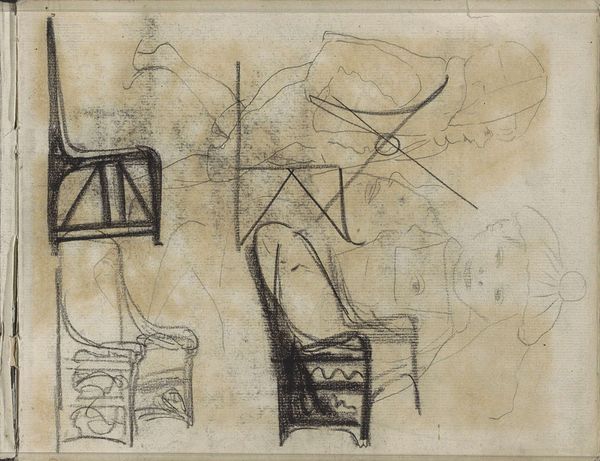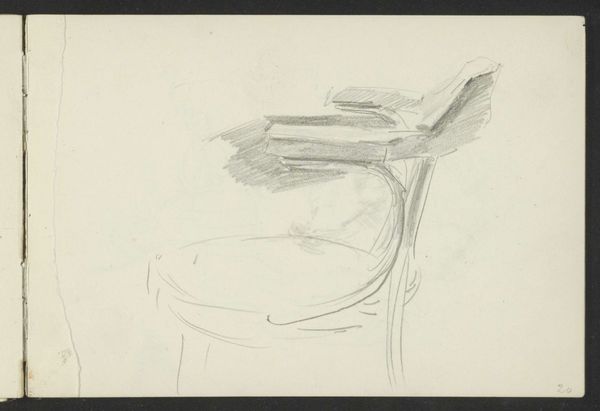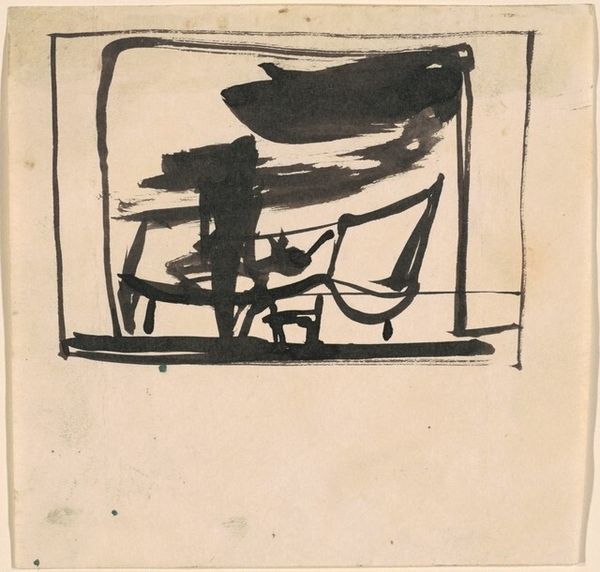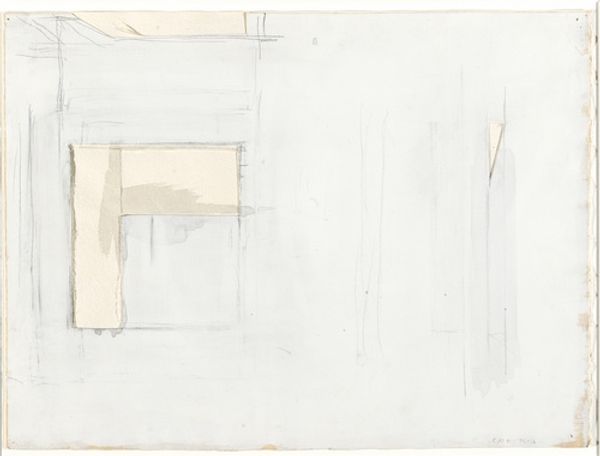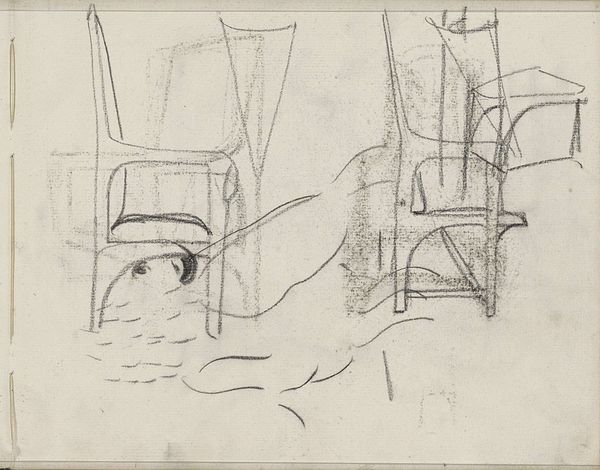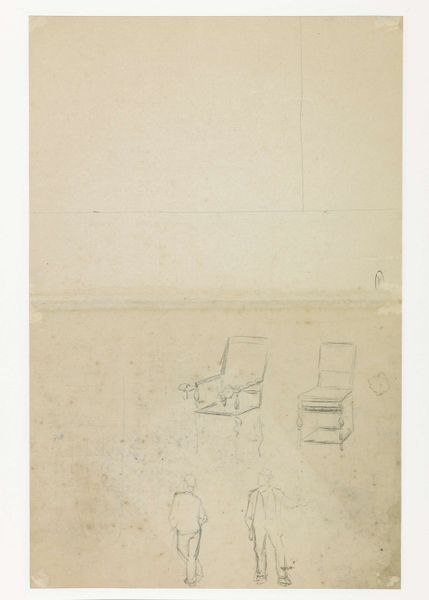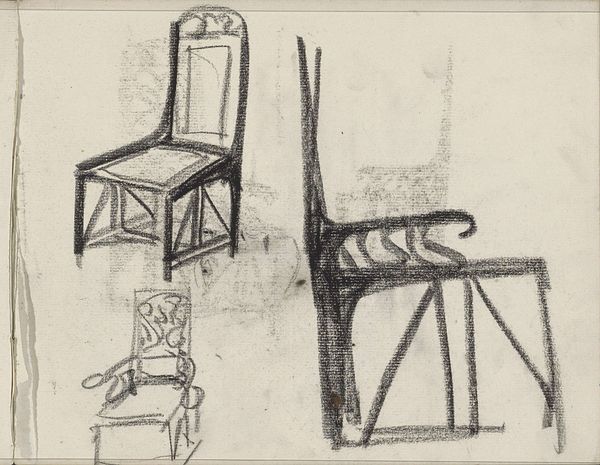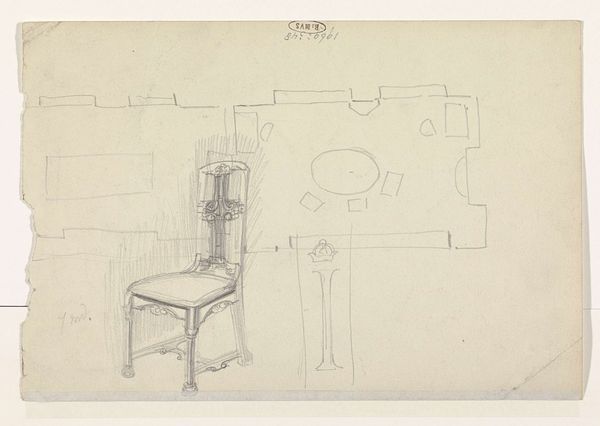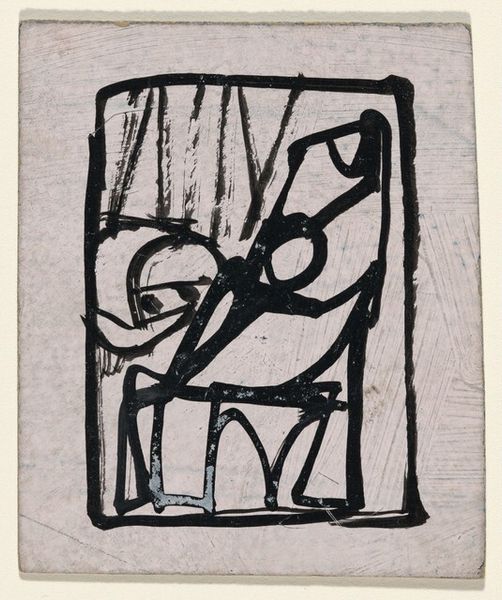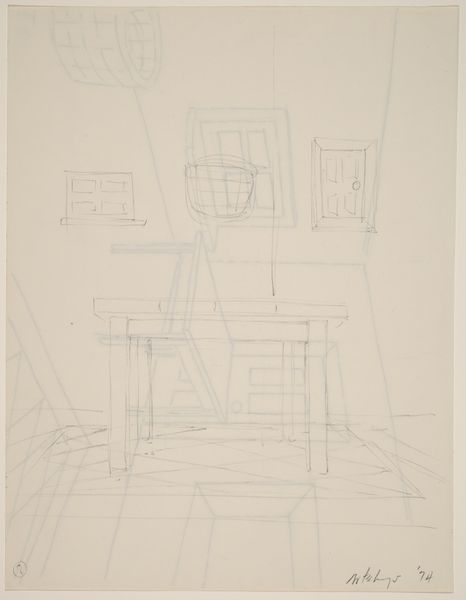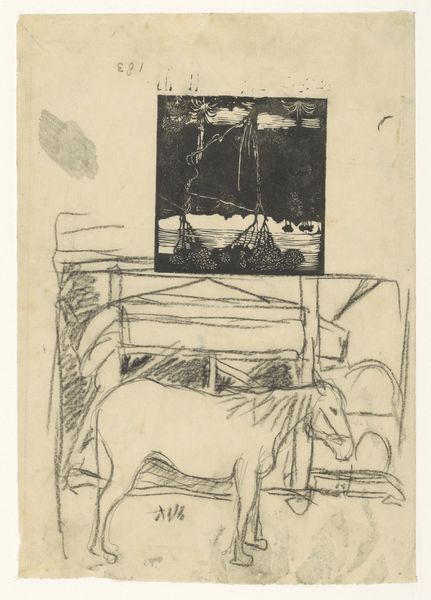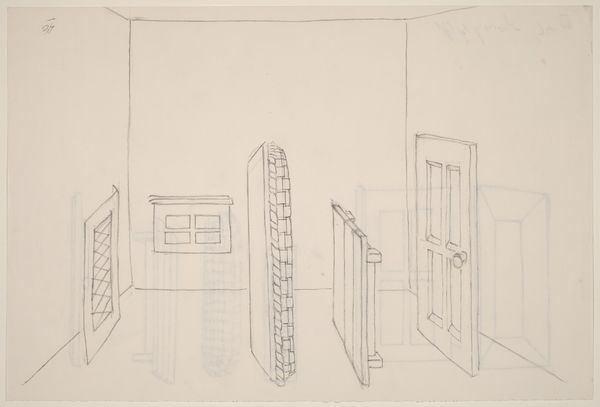
drawing, pencil
#
drawing
#
pen sketch
#
arts-&-crafts-movement
#
form
#
geometric
#
pencil
#
line
Dimensions: height 205 mm, width 257 mm
Copyright: Rijks Museum: Open Domain
Curator: Here we have "Ontwerpen voor een stoel," or "Designs for a Chair," created sometime between 1874 and 1945 by Carel Adolph Lion Cachet. It’s currently held in the Rijksmuseum collection and is rendered with pencil and pen. What strikes you initially? Editor: The stark simplicity is what hits me. Just raw, sketched lines. And there's an unfinished quality that really lends an intimate, almost vulnerable feel to something as traditionally functional as a chair. Curator: Cachet, who was influenced by the Arts and Crafts movement, was deeply concerned with the societal implications of design. It’s interesting how this drawing allows us to access a liminal stage, the idea before the crafted object itself, thereby challenging assumptions about domesticity and labour. Editor: Right, it’s not just a chair, but the very *idea* of a chair. I find myself pondering what the shapes of furniture mean, their psychological presence within a room. Notice how the curves soften the geometric forms, lending the sketches almost an organic feeling. Curator: That brings to mind how Cachet critiqued industrial production and mass-produced designs through embracing both industry and pre-industrial craft models. The drawings portray his dedication to reimagining utility, using both modern technology and design traditions to produce socially and aesthetically resonant works. Editor: It also brings up questions of access. Who sits in these chairs? What statements are they making about themselves? In many ways the chair is one of the most basic thrones for domestic symbolism and power, a seat, so to speak, of cultural projection. Curator: Indeed, the tension between hand-drawn design and intended manufacture presents an argument for re-evaluating production methods within capitalist economies, and, in a sense, promotes design’s ability to reinforce certain political ideologies. Editor: Seeing these, so sparse and direct, shifts my gaze to how everyday objects often bear unspoken narratives of function and status. Curator: For me, reflecting on Cachet's work brings awareness to how each part of furniture design, as much as the form it follows, contributes to establishing meaning. Editor: Agreed; and this has reshaped how I perceive the things I sit on, and the implications of where one chooses to take a seat.
Comments
No comments
Be the first to comment and join the conversation on the ultimate creative platform.
